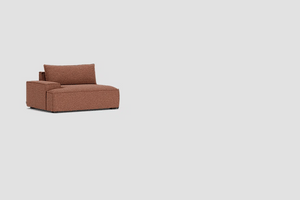
The Art and Heritage of Simplistic Danish Design
The Art and Heritage of Simplistic Danish Design
Known for its minimalism, functionality, and elegance, Danish design is both practical and aesthetically refined. It has become an increasingly popular choice for global customers and interior designers alike and has seen immense traction over the past decade.
One of the defining features of Danish design is impeccable and recognizable quality. Danish manufacturers tend to gravitate towards using high-quality materials, including solid wood and natural fibers, with a focus on creating products that are sustainable, durable, and able to gracefully stand the test of time. Artistry and unparalleled craftsmanship is another top priority, with many Danish pieces being made by skilled artisans who match and complement the unique and innovative designs they create.

The minimalist, functional design of Danish furniture pieces makes them a great fit for a wide range of interior styles and preferences, from modern to traditional, quirky, and refined. The clean, organic lines and naturalistic shapes used, make it easy to bring the essence of Scandinavian style into your interior space.
The origins of Danish design can be traced back to the early 20th century, when several prominent designers and architects, including Kaare Klint, Arne Jacobsen, and Poul Henningsen, began to develop a new approach to design that emphasized functionality and simplicity. They were influenced by the Arts and Crafts movement, which emphasized traditional craftsmanship and the use of natural materials.

Image of The Egg Chair designed by Arne Jacobsen in 1959 for the Radisson SAS hotel
During the 1930s and 1940s, Danish design began to gain international recognition, with designers like Finn Juhl, Hans Wegner, and Borge Mogensen creating furniture that combined form and function in a way that was both elegant and practical.
In the 1950s and 1960s, Danish design became even more influential, with well-established companies producing a wide range of products, from furniture and ceramics to electronics and kitchenware. The movement became known for its emphasis on simple, organic shapes and the use of natural materials like wood, leather, and stone.

Image of Kaare Klint's KK9662 Faaborg Chair was designed in 1914 for contemplating artwork at the Danish Faaborg Museum
The beauty of Danish design is rooted in its duality, in the sense that it is both modern and tips its hat to nostalgia—playful, simple innovation at its finest. With clean lines, a minimalist aesthetic, and expert craftsmanship, Danish design has become revered in the industry. From iconic mid-century modern designs to contemporary creations, each piece of furniture seems to exude a sense of whimsy, as if it's inviting you to sit down, relax and find ease.

At SOFACOMPANY we've got our own Danish Design Team and because of that, we're able to create a unique SOFACOMPANY look that is rooted in true Scandinavian style. Our team works with a clearly defined design philosophy and designs furniture based on what we as a brand value the most: individuality, durability, comfort, functionality - and love for traditional craftsmanship, all of the aspects that make up authentic Danish design.
We are proud of our heritage and will always endeavor to ensure that the Danish influence remains a core part of who we are and what we do.


